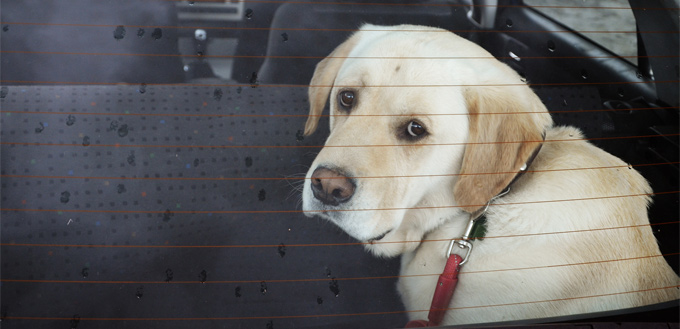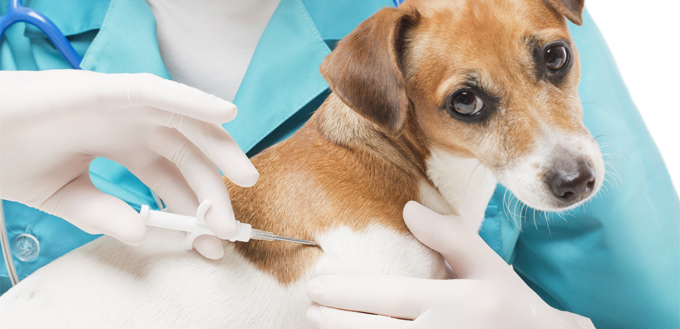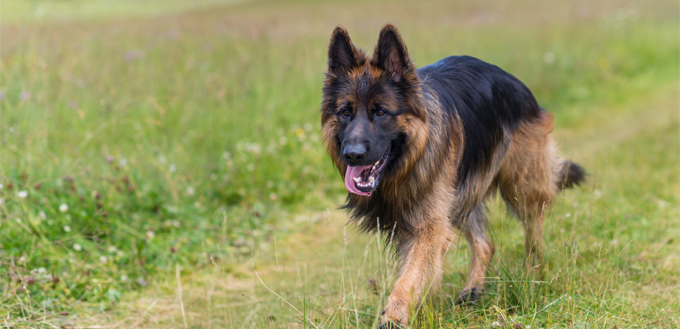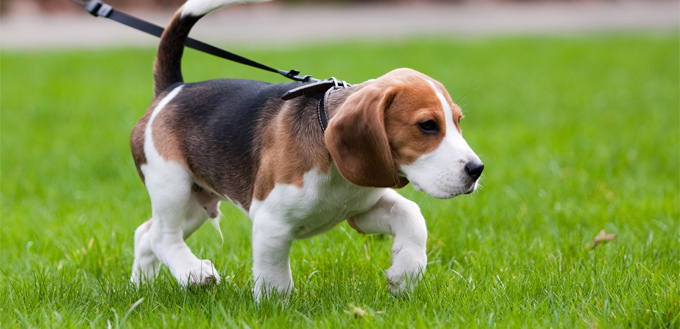Thinking about having your dog taken from you is a personal nightmare for every single dog owner out there. One’s imagination goes in to overdrive when thinking about how scared our four legged friends would be when out of their usual environment with loving owners.
However, dognapping has been quietly on the rise for years now, yet dog owners still seem largely unaware of the worrying statistics. It is thought, by the Missing Pets Bureau, that almost 40 percent of animals that are reported as lost to the police are in fact stolen. Of that 40 per cent, sadly, the majority are never found.
With pretty slack animal abuse laws around the world, dognapping is sadly an attractive means for criminal minds to make easy money. In the UK, for example, a minimum sentence for stealing a dog can be community service or simply a fine. Dogs are categorised in the UK as a personal possession, so when someone steals a little pup, it is seen by the law as if the perpetrator stole a mobile phone or something similar.
Obviously, the victims of such attacks know very differently and the thought of losing a dog is a scary one. Therefore, by understanding dognapping, dog owners will start to protect and keep their pets safe.

What exactly is Dognapping?
The term is a play on words from the phrase kidnapping and is when a person’s beloved pet is stolen from them and held for ransom. Amounts that are demanded really vary in relation to what the dog is, who is making ransom demands and the wealth of the dog owners.
Sadly, dognapping is not a new trend. It started in the first half of the 20th century, if not earlier, when medical trials on dogs were much more the norm. Dogs were stolen and then sold to medical firms who needed animals to test on.
It is now carried out for fueling the black market for puppies and dogs of particular breeds as well as a means of extorting money from unsuspecting victims. Thieves can also make money by selling non spayed or neutered dogs to illegal puppy farms or breeders.
So, How Does Dognapping Happen?
Dognapping is often a targeted offence whilst at other times dognapping is the result of opportunistic criminals. It means that dog owners should be aware of their actions and the implications they can have on their dog’s safety.
What Can I Do To Keep My Dog Safe?
Now that you know that dognapping can happen to anyone, you’re on the right path for keeping your dog safe by simply being aware of how your pet could be taken from you.
- Microchipping
In addition, there are a whole host of ways that you can help protect your dog nowadays. Without doubt, the number one way to increase your dog’s safety is by having him or her microchipped. The chips can be linked directly to you thus making them hard to sell on if your loved canine were to be taken from you.

There is an online system that vets and breeders can check to ensure that no dogs are sold on illegally. They’re also a means of acting like a beacon, so that should your pet end up at a vet’s having been taken from you, or even having simply got lost on a walk, a vet can contact you with news of your pup’s discovery.
- Dog Tags
As an extension of microchipping, ensure that your dog has a collar and dog tag around his neck at all times. Put your contact details on his tag so that if he or she is only lost, you can be called. If and when you move, keep your details online, and on their tags, up to date.
Related Post: Best Dog Collars
- Running Errands
One of the number one places dogs are taken is when owners leave them outside shops when out running errands. So if in doubt, it is better to be safe than sorry by leaving your dog in the confines of your home. Install window locks and never leave your house without securing it behind you.
- Keep An Eye On Them
On very rare occasions, though occurrences are unfortunately on the rise, dognappers have been known to chance their luck at stealing dogs from people’s back gardens when a dog is out taking a comfort break. It seems horrible to think that this could be a place of danger, but it will do your dog no harm to at least keep an eye on him whilst he is out taking a tinkle.
- Use A Lead
In a similar vein, and particularly if your dog is a breed that susceptible to dog napping, it will keep your dog much safer if you use a dog leash or lead at all times on a walk. Whilst incredibly hard to do (we all know most dogs love nothing more than to be let off a lead on their daily walks), it does keep your pet by your side where you can see it. In reality, this safety precaution probably cannot be employed on every single walk – dogs need to be given a good run around for exercise – but it is good to at least be aware of where exactly you are letting your dog off. So ask yourself some necessary questions like, are there a large amount of trees and covered spaces where my dog could be taken? Can I see my dog easily? Is this a safe area to walk my dog?
Related Post: Best Dog Leash
- Vary Dog Walks
In addition, it is a great idea to vary your dog walks. Both in terms of time and location. If you walk the same route every day at the same time, you are laying yourself open to dognappers taking your dog from right underneath your nose.
- No Cars
Another time that dognapping often occurs is when owners leave their dogs in their cars. Thieves will happily break into a parked vehicle if the dog inside will reach a high enough price on the black market or through a ransom. You wouldn’t leave an expensive piece of electrical equipment on display like an iPhone or laptop, so the same should be held true with your dog.
- Buy or Adopt With Provenance
Similar to making sure you have your dog microchipped, before you buy or adopt a dog, make sure you know where it has come from beforehand.

In this way, you will diminish and help stall the proliferation of the black market that dognappers feed on. By asking questions about where a pup or dog has come from, you can circumnavigate buying any dog that is being sold illegally.
- Choose Your Breed Wisely
The black market that is fuelled by dognapping has a certain few preferred breeds so to lower your chances of never being a victim of dognapping, look at buying a less popular breed -the relationship you form with the dog will be just as good! Breeds that are known targets for dog nappers are: Labrador Retrievers, Yorkshire Terriers, Labradoodles, Chihuahuas, French Bulldogs, Boston Terriers, Pugs, Malteses, German Shepherds, Cocker Spaniels, Pomeranians, Pitbull Terriers and Dachshunds.
- Stranger Danger
With this in mind, be wary of overly interested strangers that you bump into on walks with your dog. People can ‘tot up’ how much a dog is worth based on its age and whether it has already been spayed or neutered – information that dog owners usually happily divulge when talking about their furry friend. Stay clear of mentioning, in all circumstances, how much your dog cost when you bought him or her.
- Use Technology
There is a developing technology too that allows you to track where your pet is on your smartphone. Whilst still not perfect, owing to using clunky contraptions for your dog to wear around its collar, the device can help you locate your dog if he or she is at the very least lost. Sadly, as the GPS device needs to be on the dog for you to track it, if he or she has been stolen, the thieves will likely just remove it. However, if you are very worried about your dog’s safety, and he or she is a particularly sought after breed, it will do your pooch no harm to wear one.

What To Do If Your Dog Is Taken
- Call All The Local Shelters
They’re a great source of knowledge for good places to start looking if you have lost your dog. They’ll not only keep an eye out themselves, but they will also have your contact details should your dog be dropped off with them. They will probably also be aware of perpetrators of dognapping crimes through their knowledge of puppy farms and backyard breeders.
- Report It To The Police
Whilst punishments may not fit the crime, dognapping is still very much against the law. So make sure you report your dog as stolen to the authorities. The police will be invaluable in helping you find your much loved pooch again with all their investigative tools available at their fingertips. They will know a great deal more about similar past crimes too that can help find your dog as well as bringing thieves to justice.
- Talk To Anyone That Will Listen
This will help you find any witnesses that were present when your dog went missing, or perhaps give you information about likely thieves. If you find out anything important, report that straight back to the police officers assigned to your case.
- Regularly Look Around Your Local Streets
These include the ones you walk your dog on as well as asking any neighbours that often look after him or her, if they have seen your pet. Dogs are creatures of habit, so if you suspect that your dog has simply got lost as opposed to been stolen, follow your usual dog walking route for as long as you can stand. Even the best behaved dogs forget to respond to calls of “here” sometimes due to being distracted by a smell or movement in the bushes.
- Put Up Posters
Remember that sometimes going old school can also be effective. So try out some good old fashioned posters around your neighbourhood stating clearly that your dog is missing and what your contact details are. If anyone has seen anything untoward happening, they will be able to get in touch with you easily.
- Use Facebook and Social Media
Using social media will also extend the reach of your posters. Post on Facebook groups for your area as well as your own news feed and any other sites you use to help publicise that your dog is missing.
- Offer A Reward
As a last resort, you could offer a reward for a quick return of your dog. If he or she has indeed been taken by a less than salubrious character, a cash prize could be a way of kickstarting the process of getting your beloved pet back. Whilst this may fuel the fire for further dog thefts, we all want our dogs to be home safe and sound, so it is still a worthwhile option.

The Bottom Line
Simply by being aware of the growing rise in dog thefts, dog owners will immediately make their dogs safer. Most owners would do anything to keep their pets secure as dogs fast become a member of the family, just as much as children do. By following the above steps in how to keep your dog safe, you can be confident that you are doing all that you can to diminish the chances that you and your dog will fall victim to dognapping.
Sources:
- Teresa Traverse, 10 Pet Safety Tips For When Your Dog is Home Alone, PetMD







